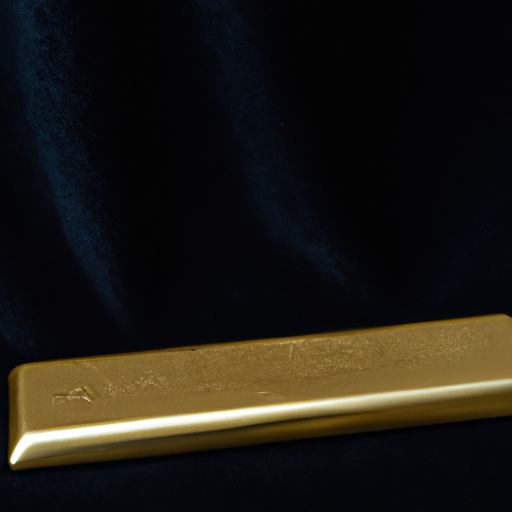Factors to Consider When Choosing a Gold Investment Strategy
When it comes to investing in gold, the options are seemingly endless. From physical gold bars and coins to gold exchange traded funds (ETFs) and gold futures contracts, the choices can be overwhelming. It’s important to consider a few key factors when deciding on a gold investment strategy.
First, you should take into account your personal financial goals. Are you investing in gold as a hedge against inflation or as a long-term store of value? Are you looking for steady growth or do you want to capitalize on short-term price fluctuations? Answering these questions will help you decide which type of gold investment is best suited for you.
Next, you should consider the cost of your gold investment, including commissions and taxes. Physical gold can be expensive to store, and ETFs and futures contracts can come with hefty fees. Determine the cost of your gold investment before you commit to it.
Third, you should understand the risks associated with investing in gold. Its price is highly volatile, and gold doesn’t pay dividends like stocks or bonds. You should also consider the liquidity of your gold investment. Physical gold may be difficult to sell in a pinch, while ETFs and futures contracts are more liquid.
Finally, you should be aware of the potential scams associated with gold investments. Be sure to do your due diligence and research the gold dealer or broker you are doing business with. Make sure they have a good track record and that they are properly regulated.
Now that you know what to look for when choosing a gold investment strategy, it’s time to get started. If you’re new to gold investing, consider starting with a small investment and increasing it over time. This will help you get a feel for the market before you commit too much of your capital. You can also consider investing in gold through ETFs, futures contracts, or even gold jewelry. There are many options available, so it’s important to shop around and find the best fit for your investment goals and risk tolerance.
Investing in gold can be a great way to diversify your portfolio, protect your wealth, and potentially capitalize on short-term price swings. There are many factors to consider when selecting a gold investment strategy, so take your time and do your research to make an informed decision. With a bit of patience and a little bit of knowledge, you can be on your way to a more secure financial future.

Understanding the Benefits of Investing in Gold
Investing in gold is a smart move for any investor. Gold is a safe-haven asset that has been around for centuries and is an important part of many financial portfolios. Gold is highly liquid, meaning it can be bought and sold easily, and it is an asset that is valued by both individuals and governments. Investing in gold can provide investors with many benefits, including portfolio diversification, asset protection, and long-term financial security.
Understanding the benefits of investing in gold is essential for any investor. Gold is an excellent way to diversify your portfolio and reduce risk. By investing in gold, you can protect yourself from the volatility of the stock market and global economic uncertainties. Gold is also a great way to hedge against inflation, as it tends to rise in value when the cost of living increases. Gold is also considered to be a long-term store of value and can be used as a hedge against currency devaluation.
Another benefit of investing in gold is that it is a tangible asset that you can hold in your hand and physically see. Unlike stocks and other investments, gold is not subject to market fluctuations and can be held over time and passed down to future generations. Gold is also often considered to be a safe-haven asset and can be used as a hedge against currency devaluation and geopolitical risks.
For those looking to start investing in gold, it is important to understand the different types of gold investments available. The most common way to invest in gold is through gold bullion, which is gold coins or bars held in a vault. Gold coins, such as Krugerrands or Sovereigns, are easy to purchase and can be kept in a safe or safety deposit box. Gold bars are a bit more expensive but can be a great long-term investment.
Another way to invest in gold is through gold exchange-traded funds (ETFs). Gold ETFs are a great way to invest in gold without having to purchase physical gold. Gold ETFs are backed by actual gold and track the price of gold, so they can be bought and sold on stock exchanges just like stocks.
Finally, you can also invest in gold futures. Gold futures are agreements between two parties to buy or sell a specified amount of gold at a future date and price. Gold futures can be highly risky and are not recommended for novice investors.
Investing in gold can provide investors with many benefits, including portfolio diversification, asset protection, and long-term financial security. It is important to understand the different types of gold investments available and research the best option for you before getting started. With the right approach, gold can be a great addition to any portfolio.

Getting Started with Gold Investing
Investing in gold is a great way to diversify your portfolio and protect yourself from the volatility of the stock market. Gold has traditionally been used as a safe haven in times of economic and political turmoil, and it has historically outperformed other asset classes over time. Because of its unique properties, gold is an attractive option for investors who are looking for stability, diversification, and long-term returns.
If you’re ready to take the plunge and start investing in gold, there are a few things you should know before getting started. First, you should decide whether you want to invest in physical gold, such as coins and bars, or paper gold, such as ETFs and futures contracts. Each option has its own advantages and disadvantages, so it’s important to do your research and figure out which option is best for you.
Next, you’ll need to decide how much money you want to invest in gold. You can start small, with just a few coins or a small ETF, or you can go big and invest a large chunk of your portfolio in gold. You may also want to consider investing in a gold IRA, which allows you to use your retirement funds to buy gold.
Once you’ve decided how you want to invest in gold, you’ll need to decide where to buy it. You can buy gold from a variety of sources, including banks, brokers, and even online dealers. It’s important to do your research and make sure you’re dealing with a reputable dealer.
When buying gold, you’ll also need to decide what form of gold you want to purchase. You can buy gold in the form of coins, bars, ETFs, futures contracts, and more. Each form of gold has its own advantages and disadvantages, so it’s important to do your research and figure out which option is best for you.
Finally, you’ll need to decide how to store your gold. You can store it in a safe deposit box at your bank or in a secure vault. You can also store it in a home safe or with a reputable storage company. Whichever option you choose, make sure that your gold is properly insured and that you have a secure storage plan in place.
Investing in gold can be a great way to diversify your portfolio, protect your wealth, and generate long-term returns. By doing your research and understanding the different forms of gold and where to buy it, you can make an informed decision and get started with gold investing. With a little bit of research and planning, you can get started on the path to success with gold investing.

The Pros and Cons of Buying Physical Gold
Investing in physical gold can be a great way to hedge against economic uncertainty and inflation, and it can also be a great way to diversify your portfolio. However, like any investment, there are pros and cons to consider before jumping in.
One of the biggest advantages of investing in physical gold is that it is a tangible asset, meaning it is a real, physical item that has intrinsic value. Gold is also a durable asset, meaning that it is not affected by market fluctuations and can hold its value over time. This makes gold a great option for those looking to diversify their portfolio or protect against inflation.
However, there are some drawbacks to investing in physical gold as well. One of the biggest downsides is that gold is not easily liquidated. It can take days or even weeks to convert gold into cash, which could be an issue if you need to access your money quickly. Additionally, gold is subject to theft or damage, so it is important to store it in a safe, secure location.
In order to start investing in physical gold, you will need to decide how much you want to invest and where to buy it. Gold bars, coins, and jewelry all offer different levels of purity and value, so it is important to do your research and decide which option is right for you. You can buy gold from a variety of sources, such as dealers, online retailers, and even banks. Once you have purchased the gold, it is important to store it in a secure location such as a safe, safe deposit box, or bank vault.
Overall, investing in physical gold can be a great way to diversify your portfolio and hedge against economic uncertainty and inflation. However, it is important to understand the pros and cons of investing before you jump in. Research the different types of gold available, decide how much to invest, and find a secure location to store it. With these steps in mind, you can start investing in physical gold today and reap the rewards for years to come.

The Pros and Cons of Investing in Gold ETFs
Investing in gold is an age-old practice that has been around for centuries. Gold is known as a safe haven investment, a form of wealth preservation and an inflation hedge, which makes it an attractive option for many investors. However, the question of whether gold is a good investment option is a complex one, and it is important to understand the pros and cons of investing in gold ETFs before jumping in.
Gold ETFs are exchange-traded funds that track the price of gold. They provide investors with the opportunity to invest in gold without having to actually own physical gold. This makes gold ETFs a convenient and cost-effective way to invest in gold.
One of the main benefits of investing in gold ETFs is that they are highly liquid, meaning that investors can easily buy and sell them. This makes them an attractive option for short-term traders looking to capitalize on price fluctuations in the gold market. Gold ETFs also provide investors with the potential for capital appreciation as the price of gold rises.
The main disadvantage of gold ETFs is that they are subject to market risk, just like any other investment. The price of gold can be volatile, meaning that investors could potentially lose money if the price of gold falls. As with any investment, it is important to understand the risks associated with investing in gold ETFs before investing.
Despite the risks associated with gold ETFs, they can still be a great way to diversify a portfolio and hedge against the risk of inflation. Gold is often seen as a hedge against inflation, as it is not tied to any particular currency and is not subject to the same economic forces that affect other investments.
If you are looking to invest in gold ETFs, there are a few things to consider before getting started. Firstly, it is important to do your research and find out as much as you can about the gold ETFs you are considering. It is also important to understand the fees associated with gold ETFs, as these can affect your overall returns.
It is also important to remember that investing in gold ETFs should only be a part of a broader investment strategy. Gold ETFs should not be seen as a “get rich quick” scheme, and it is important to understand the long-term implications of any investment before committing to it.
Overall, investing in gold ETFs can be a great way to diversify a portfolio and hedge against inflation. However, it is important to understand the risks associated with investing in gold ETFs before getting started. With the right research and a sound investment strategy, gold ETFs can be a great way to build wealth over the long-term.

Using Gold ETFs to Diversify Your Portfolio
Gold is a timeless asset that has served as a store of value for centuries. Yet, many investors overlook it in favor of stocks, bonds, and other more traditional investments. However, investing in gold can offer many benefits, including diversifying a portfolio and protecting against market fluctuations.
Gold Exchange-Traded Funds (ETFs) are a great way for investors to gain exposure to gold without having to buy physical gold. ETFs are a type of security that tracks a collection of assets, such as gold, and can provide a relatively low-cost way to diversify a portfolio. Gold ETFs are traded like stocks, and can be purchased through any brokerage account.
One of the major benefits of investing in gold ETFs is the fact that they can help to reduce overall risk in a portfolio. Gold is not correlated to the stock or bond markets, and its prices tend to move independently of the broader markets. This makes gold ETFs a great way to diversify a portfolio and protect against market volatility.
Investing in gold ETFs can also be a great way to hedge against inflation. Gold tends to hold its value over time, and historically has outperformed inflation. This makes gold a great way to protect against inflation and help to preserve purchasing power.
Gold ETFs also offer investors the ability to access gold without having to store or insure it. Gold ETFs are held in a trust, and the gold is securely stored. This means that investors don’t have to worry about the costs associated with storing and insuring physical gold, making investing in gold more accessible for all investors.
If you’re looking to diversify your portfolio and invest in gold, gold ETFs are a great way to do so. Gold ETFs are easy to buy, and offer a convenient and cost-effective way to access gold without having to purchase physical gold. With gold ETFs, investors can add a valuable asset to their portfolio and protect against market fluctuations.
To get started investing in gold ETFs, the first step is to open a brokerage account. Once you have a brokerage account, you can purchase gold ETFs just like any other stock. You can also purchase gold ETFs through a mutual fund or an ETF provider. It’s important to research different investment options and choose the one that best fits your needs.
Investing in gold ETFs can be a great way to diversify a portfolio and protect against market volatility. Gold ETFs offer investors the ability to access gold without having to store or insure it, and are a low-cost way to gain exposure to the metal. With gold ETFs, investors can add a valuable asset to their portfolio and protect against market fluctuations.

The Benefits of Investing in Gold Mutual Funds
Investing in gold mutual funds is an excellent way to diversify your portfolio and gain exposure to the precious metal. Gold is a valuable asset class, and investing in it can help to protect your portfolio from the volatility of the stock market. Gold mutual funds are a great way to access the benefits of gold without having to manage the physical asset or worry about storage.
Gold mutual funds are a type of mutual fund that invests in gold stocks, gold futures, and gold ETFs. These funds are designed to provide investors with exposure to gold, while providing diversification and risk management. Gold mutual funds are an attractive option for those looking to diversify their investments, as they provide access to a reliable asset class with low correlation to other asset classes.
When investing in gold mutual funds, investors should be aware of the risks and rewards associated with the asset. Gold prices can be volatile and there is no guarantee that the price of gold will remain at its current level. Additionally, there may be tax implications associated with investing in gold mutual funds, so it’s important to be aware of the laws and regulations in your jurisdiction.
Nevertheless, gold mutual funds can be a valuable addition to your portfolio. Here are some of the benefits of investing in gold mutual funds:
- Diversification: Investing in gold mutual funds provides investors with exposure to a diverse range of gold-related investments, which can help to reduce overall portfolio risk.
- Stability: Gold is a reliable asset class, and its price tends to remain relatively stable over time.
- Tax Benefits: Investing in gold mutual funds may offer investors certain tax benefits, depending on the jurisdiction.
- Liquidity: Gold mutual funds are liquid investments, meaning investors can easily access their funds when needed.
- Professional Management: Gold mutual funds are professionally managed, allowing investors to benefit from the expertise of experienced portfolio managers.
If you’re looking to add gold to your portfolio, investing in gold mutual funds is a great way to do it. To get started, make sure to do your research and find a reputable fund manager with a good track record. Additionally, be sure to consider the risks and rewards associated with the asset and make sure that it aligns with your overall investment goals. Finally, make sure to consult with an experienced financial advisor to ensure that you make the best investment decision for your individual needs.

How to Reduce Risk When Investing in Gold
When it comes to investing in gold, there is certainly an element of risk involved. While gold can be an excellent investment for a long-term portfolio, short-term fluctuations in the market can still cause issues. To reduce the risk associated with investing in gold, there are a few steps you can take to protect your investment.
First and foremost, you should always diversify your portfolio. Investing in a variety of assets helps to manage your overall risk. This is especially important when investing in gold, as it can have a large impact on your overall portfolio. Consider spreading your investments across other types of commodities, stocks, bonds, and other investments.
Second, you should consider investing in gold-backed exchange-traded funds (ETFs). These are funds that hold gold and other precious metals, which can provide you with a diversified investment while also reducing your risk. ETFs are also relatively liquid investments, meaning that you can easily buy and sell them without much hassle.
Third, you should always be aware of the current market conditions when investing in gold. Knowing the current price of gold, as well as the current interest rate environment and the geopolitical landscape, can help you make informed investment decisions. Try to stay up to date with the latest news and developments in the gold market, so you can adjust your portfolio accordingly.
Finally, you can also use leverage when investing in gold. Leverage involves borrowing money to purchase gold, which can potentially amplify your returns. However, it can also increase your risk, so it should only be used by experienced investors who understand the risks associated with this type of investing.
Investing in gold can be a great way to diversify and protect your investments. By following the steps outlined above, you can reduce the risk associated with investing in gold and maximize your returns. Remember to always do your research and to stay informed about the current market conditions, so you can make the best decisions for your portfolio. Good luck!


